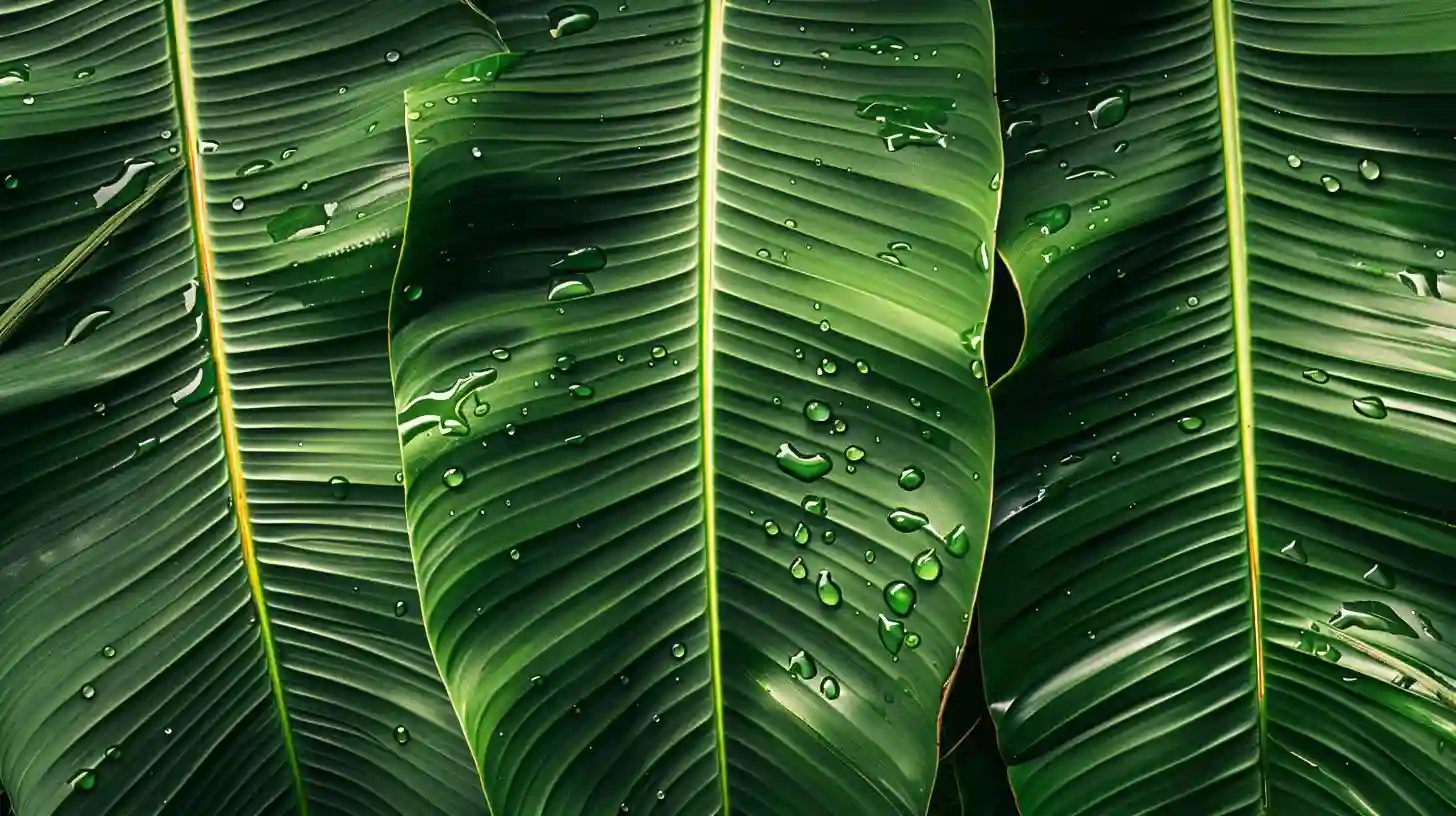
Banana leaves are an integral part of South and Southeast Asian cuisine and are widely used for preparing and serving dishes. These large, flexible, and waterproof leaves have been used for centuries in various cultures for their unique properties and benefits. Let's explore the fascinating world of banana leaves and their functions.
Banana leaves come from a perennial herbaceous plant known as the banana plant, which belongs to the Musaceae family. The plant is native to Southeast Asia but is now grown in many tropical regions around the world. Banana leaves are typically large, elongated, and have a waxy surface that repels water and prevents liquid absorption. They are commonly used in cooking, packaging food, serving food, and even as plates or bowls in some cultures.
One of the main functions of banana leaves in cooking is as a natural wrap for steaming or grilling food. The leaves are first washed and then heated over an open fire to make them pliable and easier to work with. The food is then placed on the sheet along with all the seasonings and herbs and folded or wrapped securely before cooking. This method not only imparts a subtle flavor to the food, but also helps retain moisture, resulting in tender, flavorful dishes.
Banana leaves are also used as serving plates or dishes, especially at traditional festivals and feasts. Many cultures believe that serving food on banana leaves improves the taste and aroma of the food. The leaves can be arranged decoratively, giving the dish an aesthetic appearance. This practice is not only environmentally friendly since the leaves are biodegradable and compostable, but it also adds a sense of authenticity and tradition to the dining experience.
Additionally, banana leaves are known for their antibacterial and antifungal properties, making them an ideal choice for storing or transporting food. In tropical climates where food spoilage is a problem, packaging perishable foods in banana leaves can help maintain freshness and extend the shelf life of food. The leaves create a natural barrier that protects foods from contamination and the growth of harmful bacteria, making them a safer and healthier option compared to plastic or aluminum foil.
Apart from culinary uses, banana leaves have various practical uses in traditional medicine and skin care. The leaves are believed to have cooling and soothing properties, making them a popular choice for treating minor skin irritations, insect bites and sunburn. In some cultures, banana leaves are used to make poultices or compresses to relieve pain and inflammation. The leaves are also believed to have antimicrobial properties, which may help prevent infections and promote healing.
Additionally, banana leaves are used in religious ceremonies and rituals in many cultures. They are considered sacred and symbolize purity, prosperity and fertility. The leaves are often used as decoration in temples, shrines and altars; they are believed to ward off evil spirits and bring good luck. In some traditions, banana leaves are used to make offerings to deities and ancestors as a sign of respect and gratitude.
In general, banana leaves play a significant role in the culinary, cultural and spiritual practices of many communities around the world. Their versatility, durability and environmental friendliness make them a valuable resource in various aspects of everyday life. From preparing and serving food to being used for medicinal and ceremonial purposes, banana leaves continue to be an important and valued part of traditional customs and practices. So the next time you enjoy a meal wrapped in a banana leaf or served on a banana leaf platter, remember the rich history and significance of this humble yet multi-functional leaf.